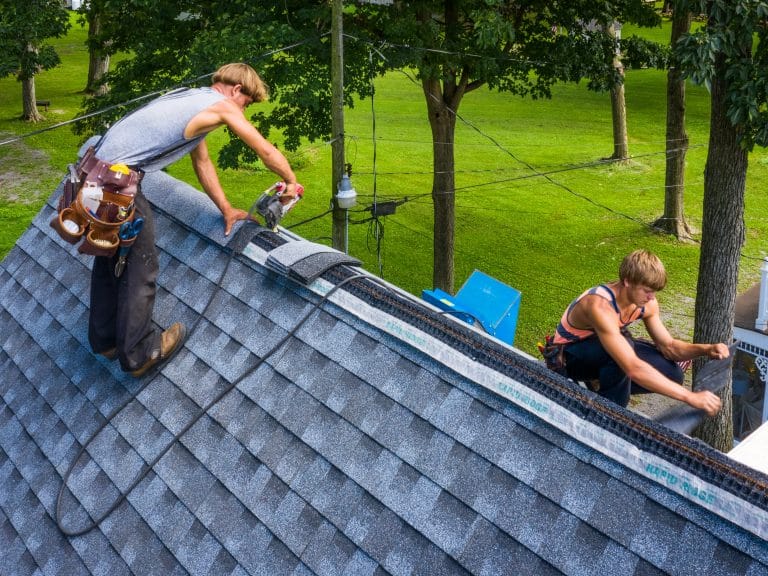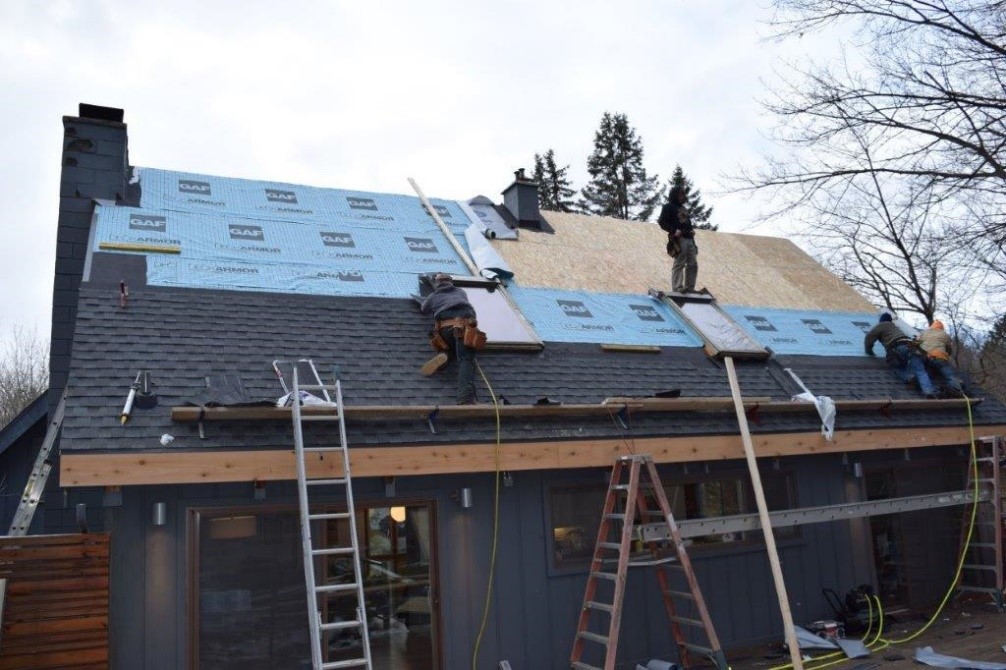The Ultimate Guide to Comprehending Different Types of Roofing Tile Products
Recognizing the different kinds of roof covering tile products is critical for home owners looking for to make educated choices that straighten with their requirements and preferences. From the cost-efficient nature of asphalt roof shingles to the sophistication of wood and the longevity of metal and slate, each choice offers unique benefits and difficulties.

Asphalt Shingles
Asphalt shingles are a prominent choice for home owners as a result of their price, toughness, and simplicity of installation. Composed of a fiberglass floor covering filled with asphalt and coated with mineral granules, these shingles offer effective security versus climate components while guaranteeing a lengthy life expectancy.
There are 2 primary kinds of asphalt shingles: three-tab and building. Three-tab shingles are lightweight, cost-efficient, and simple to mount, making them a common option for budget-conscious house owners. Conversely, building tiles include a more dimensional look, giving improved curb appeal and improved wind resistance, frequently at a slightly higher price.
Among the key advantages of asphalt tiles is their adaptability; they are available in a wide array of shades and styles, making it possible for house owners to easily match their roofing with the general aesthetic of their home. Additionally, they usually have a life expectancy ranging from 20 to 30 years, depending on the top quality and installation techniques.
Maintenance is usually very little, although regular examinations and cleaning can extend the life of the roof. Generally, asphalt tiles remain a practical and reputable roofing remedy, balancing expense, functionality, and aesthetic charm for a wide variety of domestic applications.
Wood Roofing Shingles
Wood shingles offer a natural aesthetic that charms to many property owners seeking a timeless, rustic look for their roofs. Commonly crafted from cedar, pine, or redwood, these roof shingles provide a distinct charm and can improve the overall character of a home. Their all-natural colors and textures can create a warm and welcoming environment, making them a preferred option in different architectural styles.
One considerable benefit of timber tiles is their shielding properties, which can help regulate interior temperature levels. Additionally, they are fairly lightweight, making setup easier and possibly lowering structural strain. Wood tiles call for normal upkeep to avoid problems related to dampness, such as rot and mold and mildew. Treatments and sealants can be related to boost toughness and resistance to the components - shingle roofers.
Despite their visual appeal, timber shingles may not be appropriate for all climates, particularly in locations vulnerable to wildfires. Homeowners should also think about the life expectancy of wood shingles, which typically ranges from 20 to 40 years, depending on the sort of timber and maintenance techniques. On the whole, timber shingles can be a superb selection for those who prioritize elegance and all-natural products in their roofing choices.
Steel Roofing
Metal roofing has gained appeal among home owners and contractors alike because of its resilience, long life, and reduced upkeep requirements. Offered in a range of materials, including steel, aluminum, copper, and zinc, steel roofings provide convenience in design and aesthetic appeal. They can be located in numerous styles, from standing joint to metal roof shingles, enabling homeowners to pick an alternative that matches their architectural vision.
Among the primary benefits of metal roofing is its exceptional lifespan, frequently surpassing half a century with appropriate treatment. This longevity leads to reduced replacement costs over time, making it an affordable selection. Moreover, steel roofing systems are immune to extreme weather condition conditions, consisting of hailstorm, wind, and snow, which enhances their dependability.
In enhancement to their resilience, steel roof coverings are eco-friendly, as they are frequently made from recycled materials and can be reused at the end of their life process. They likewise reflect solar convected heat, adding to power effectiveness and reduced air conditioning expenses. Generally, steel roof combines visual allure with sensible benefits, making it a progressively favored choice in modern building and construction.
Slate Shingles

In addition, slate shingles are fireproof and do not warp or end up being weak with time, contributing to their charm for homeowners looking for a dependable roofing solution. The visual flexibility of slate is one more significant advantage; it is readily available in numerous shades and structures, permitting a personalized look that can complement any architectural design.
Installment of slate shingles, however, needs specialized skills due to their weight and the demand for precise positioning. This can bring about greater preliminary costs compared to various other roof covering products. Nonetheless, the long-lasting worth of slate, both in regards to longevity and prospective energy performance, read this article often offsets these in advance expenses.
Artificial Alternatives
As property owners progressively seek choices to standard products, synthetic roofing choices have gotten popularity for their versatility and cost-effectiveness. advice These innovative products use a blend of aesthetics, performance, and durability, making them an attractive option for a large variety of building styles.
Synthetic roof covering roof shingles are commonly made from a combination of polymers and recycled materials, enabling makers to create items that imitate the look of natural materials like slate or timber without the connected maintenance obstacles. roofers. One of the most substantial benefits of synthetic tiles is their lightweight nature, which minimizes the structural load on a home. In addition, they are engineered to stand up to harsh weather condition problems, using remarkable resistance to wind, hailstorm, and UV radiation
Moreover, artificial alternatives commonly include prolonged service warranties, reflecting their sturdiness and lengthy lifespan. Property owners can likewise take advantage of energy-efficient styles that assist lower heating & cooling expenses. In general, synthetic roof materials represent a wise financial investment for those seeking to enhance their residential property's curb appeal while ensuring lasting reliability and sustainability. As technology remains to development, these choices are likely to develop, better solidifying their place in the roof market.
Conclusion
In final thought, the selection of roof covering shingle materials considerably influences the visual, durability, and maintenance of residential structures. Asphalt tiles provide click reference cost and convenience of setup, while timber tiles offer natural charm. Steel roof covering presents phenomenal longevity, and slate roof shingles are renowned for their longevity and sophistication. Synthetic options combine different benefits, accommodating varied property owner choices. Ultimately, recognizing these products enables informed decision-making, making sure that selections align with financial constraints and ecological considerations.